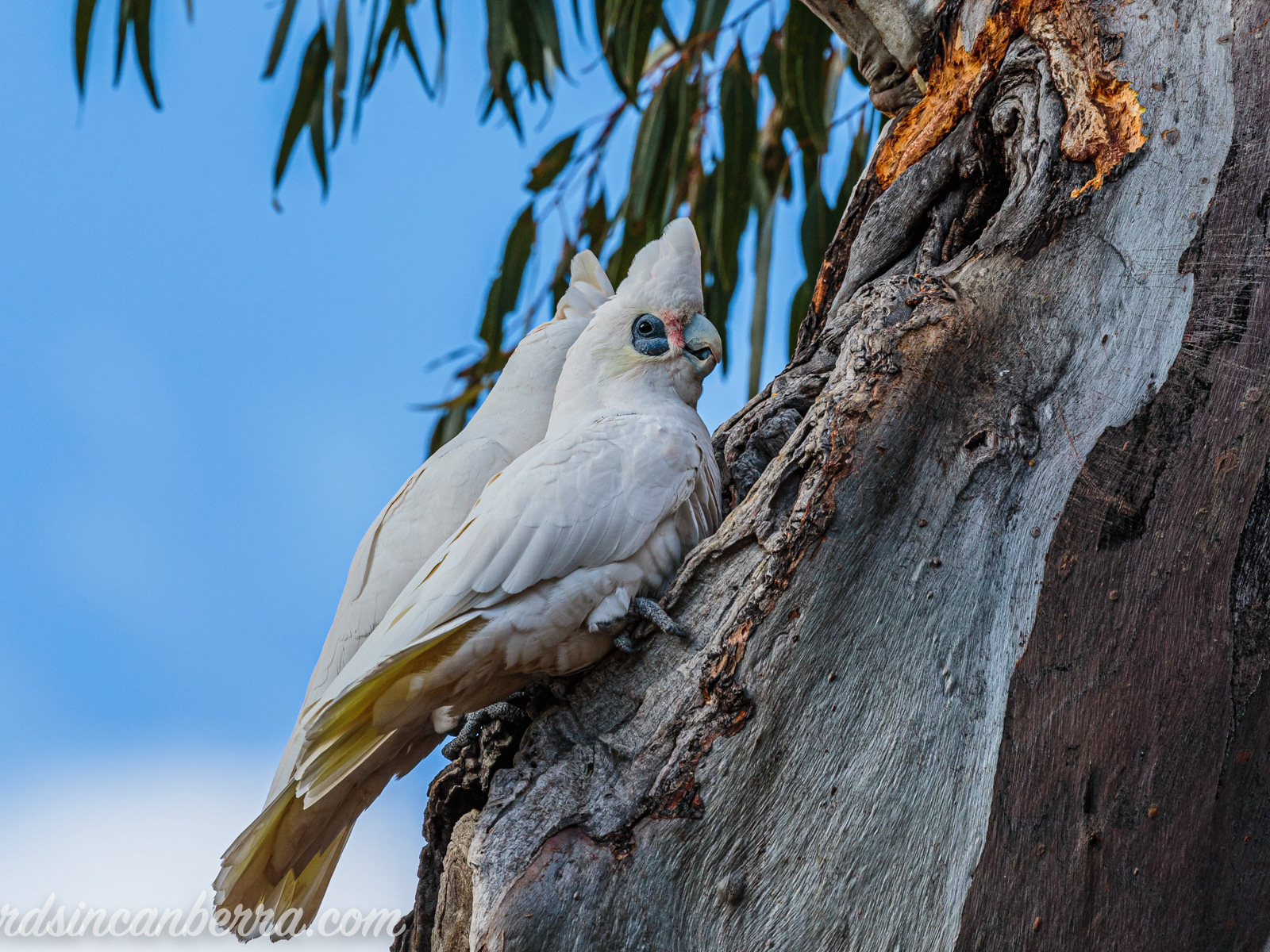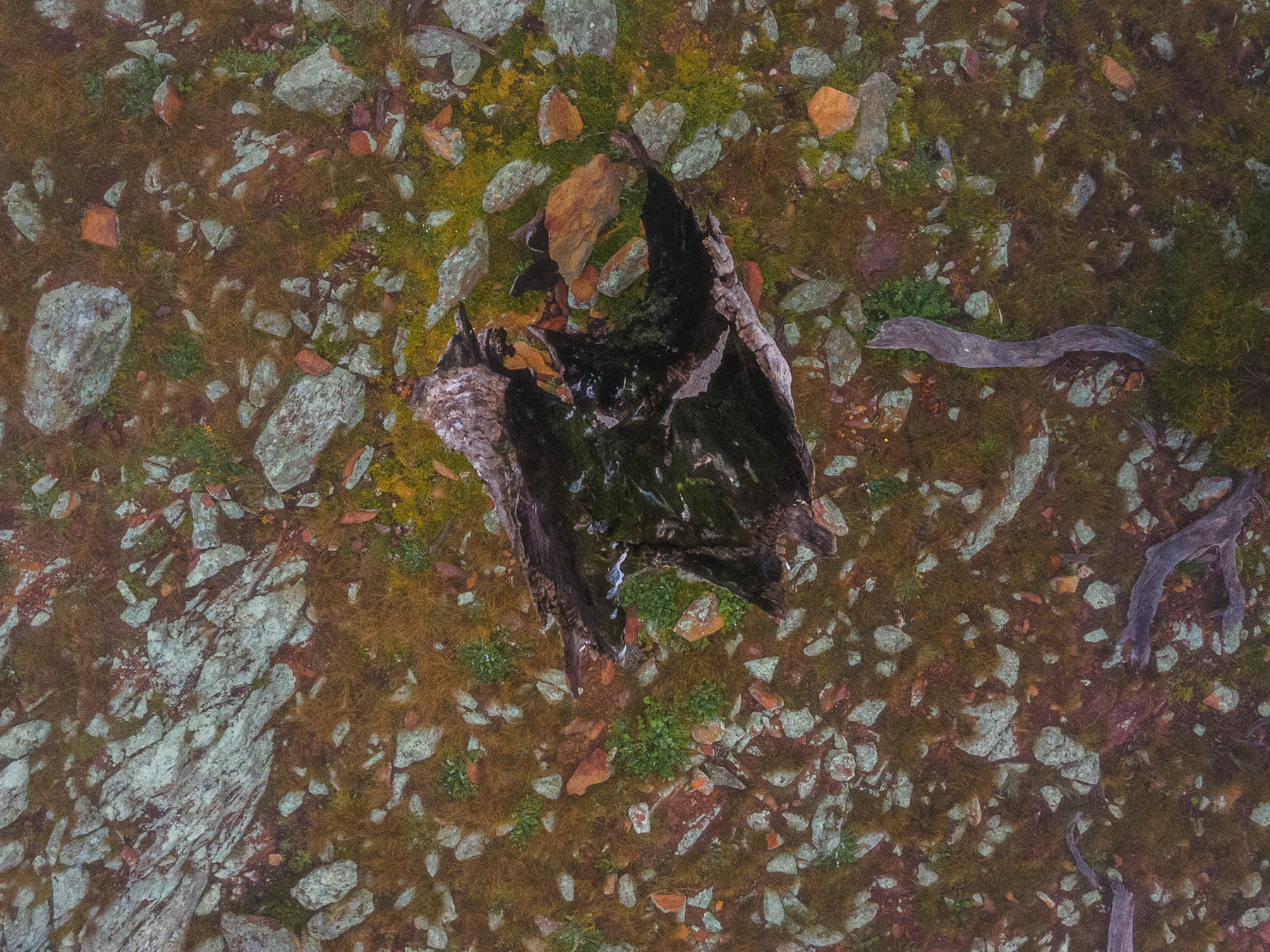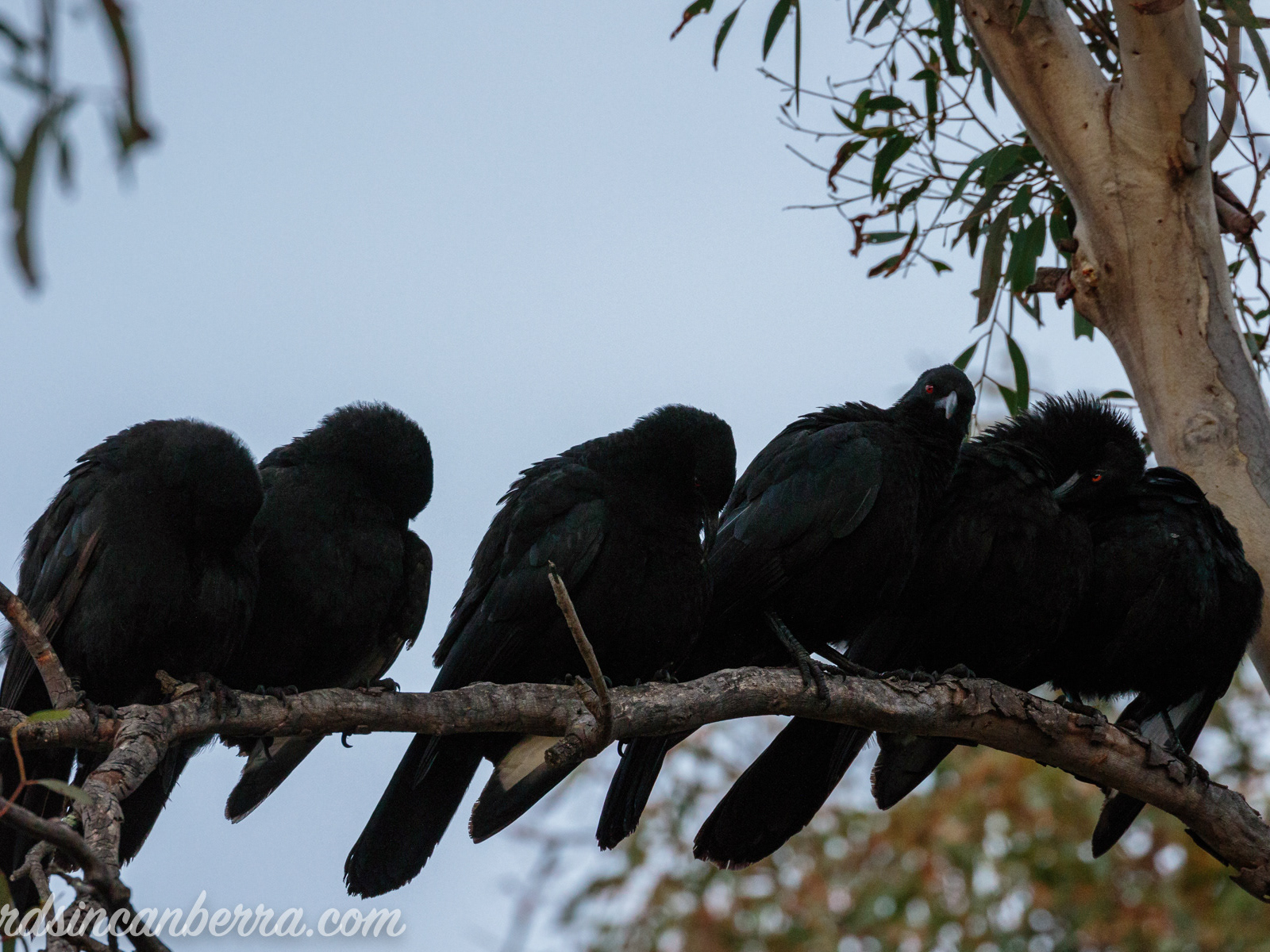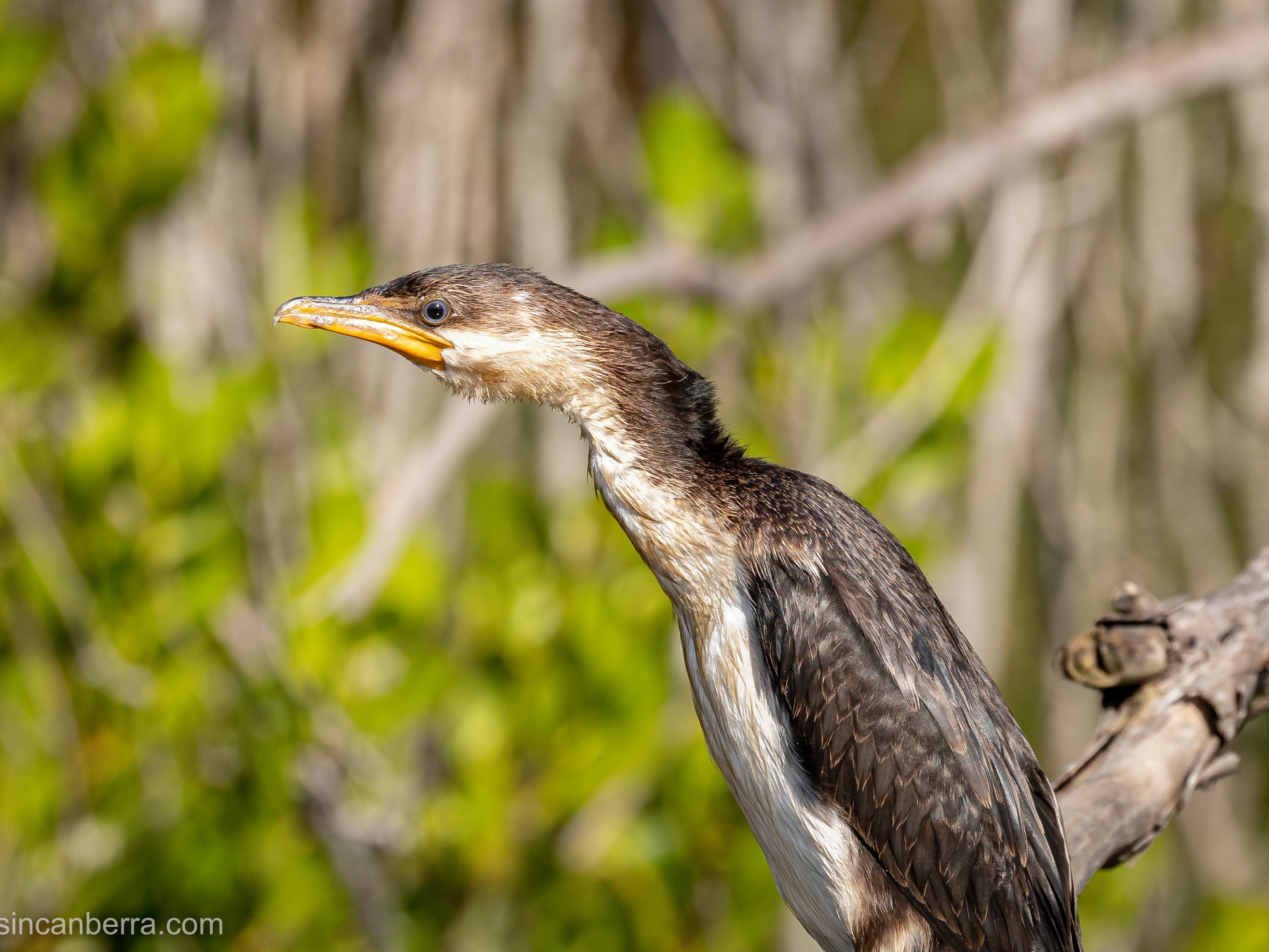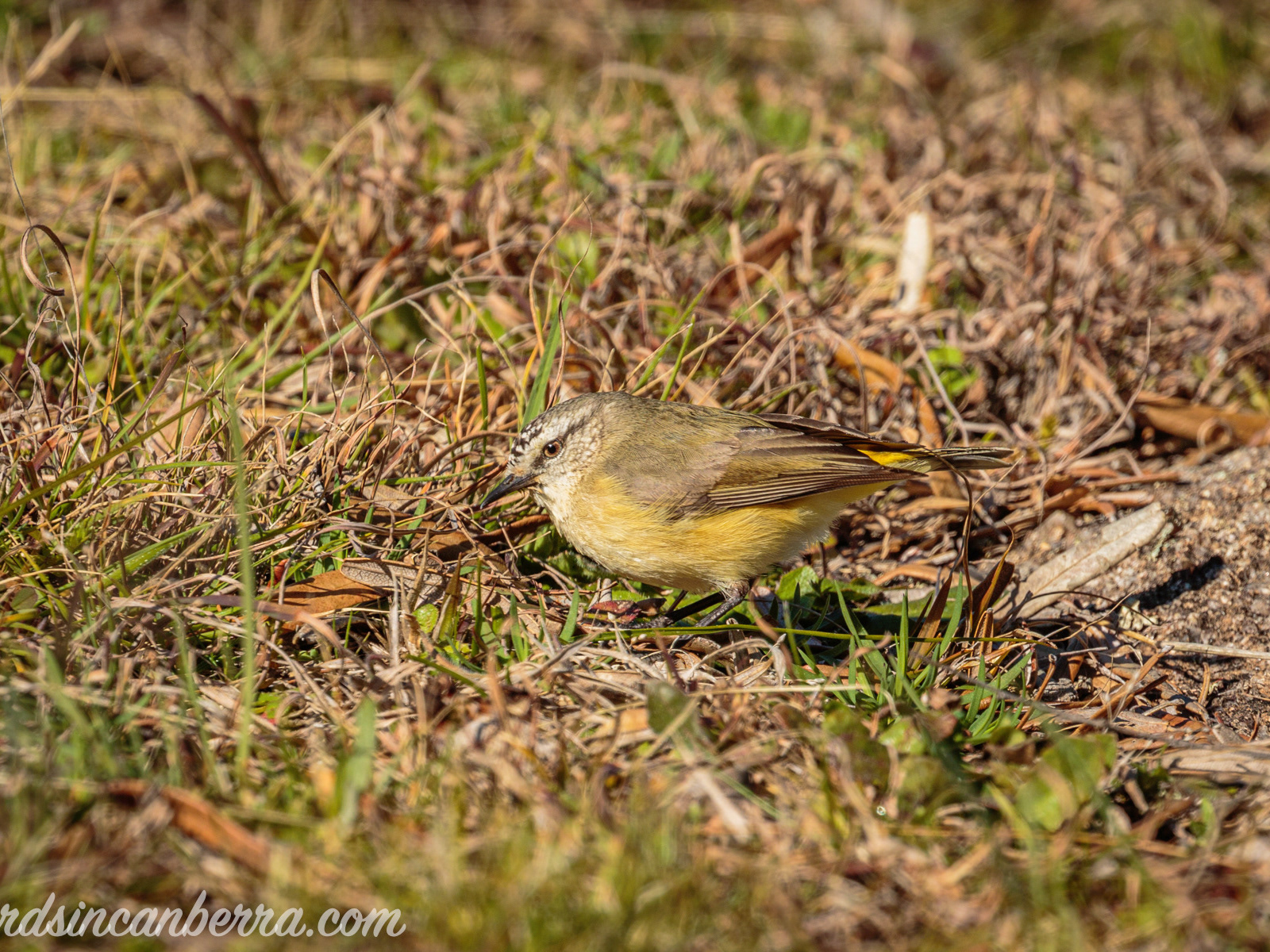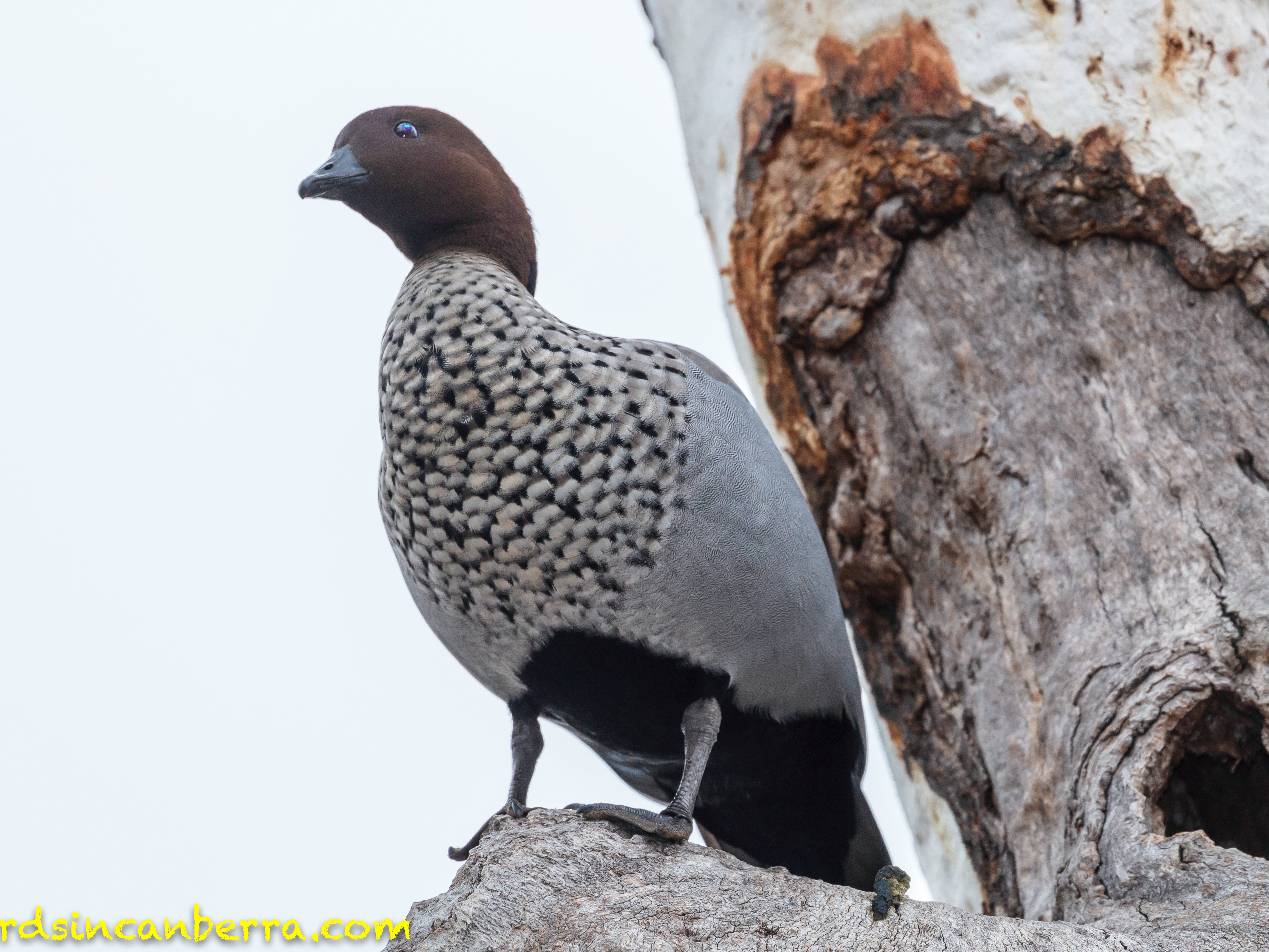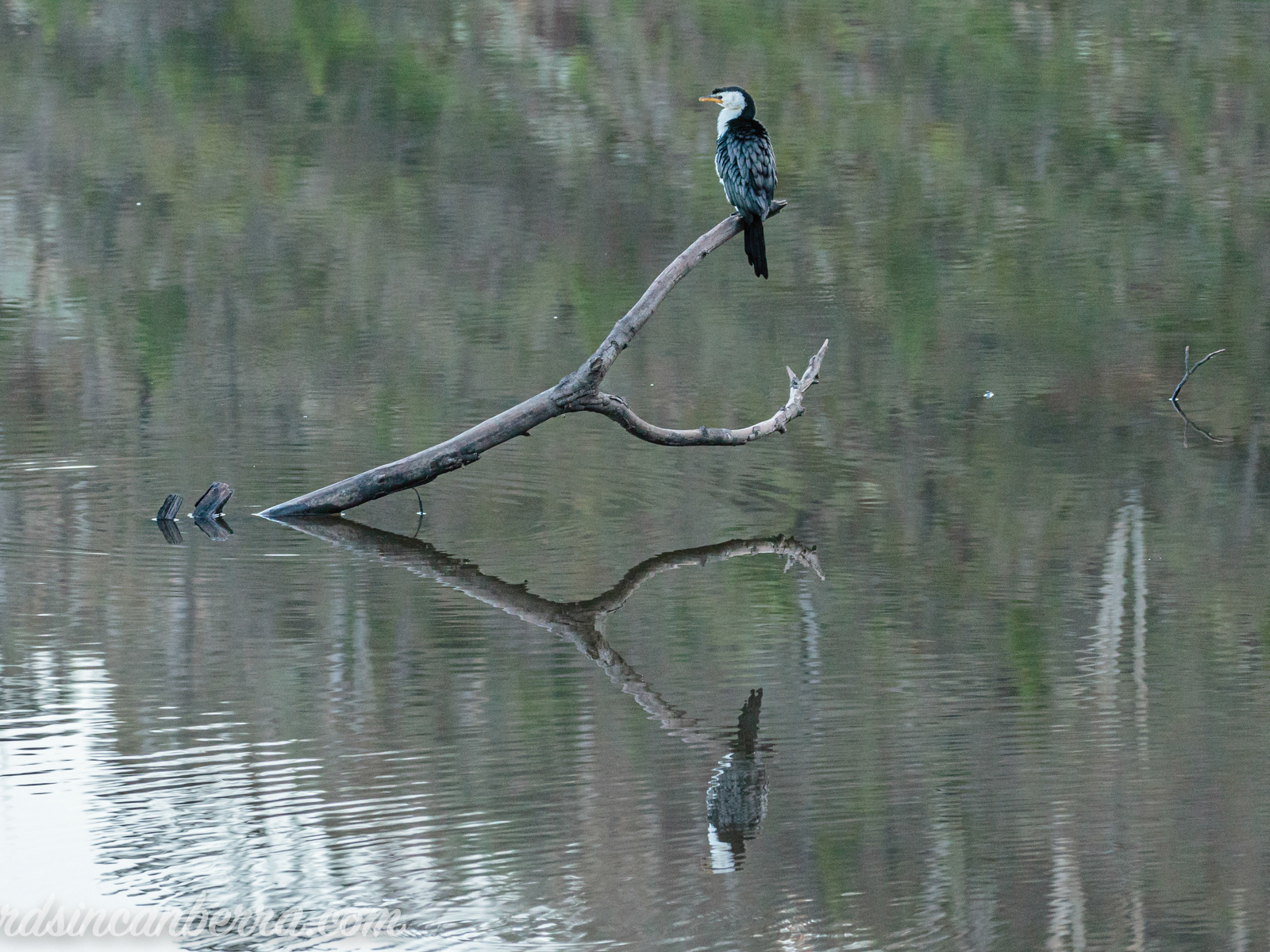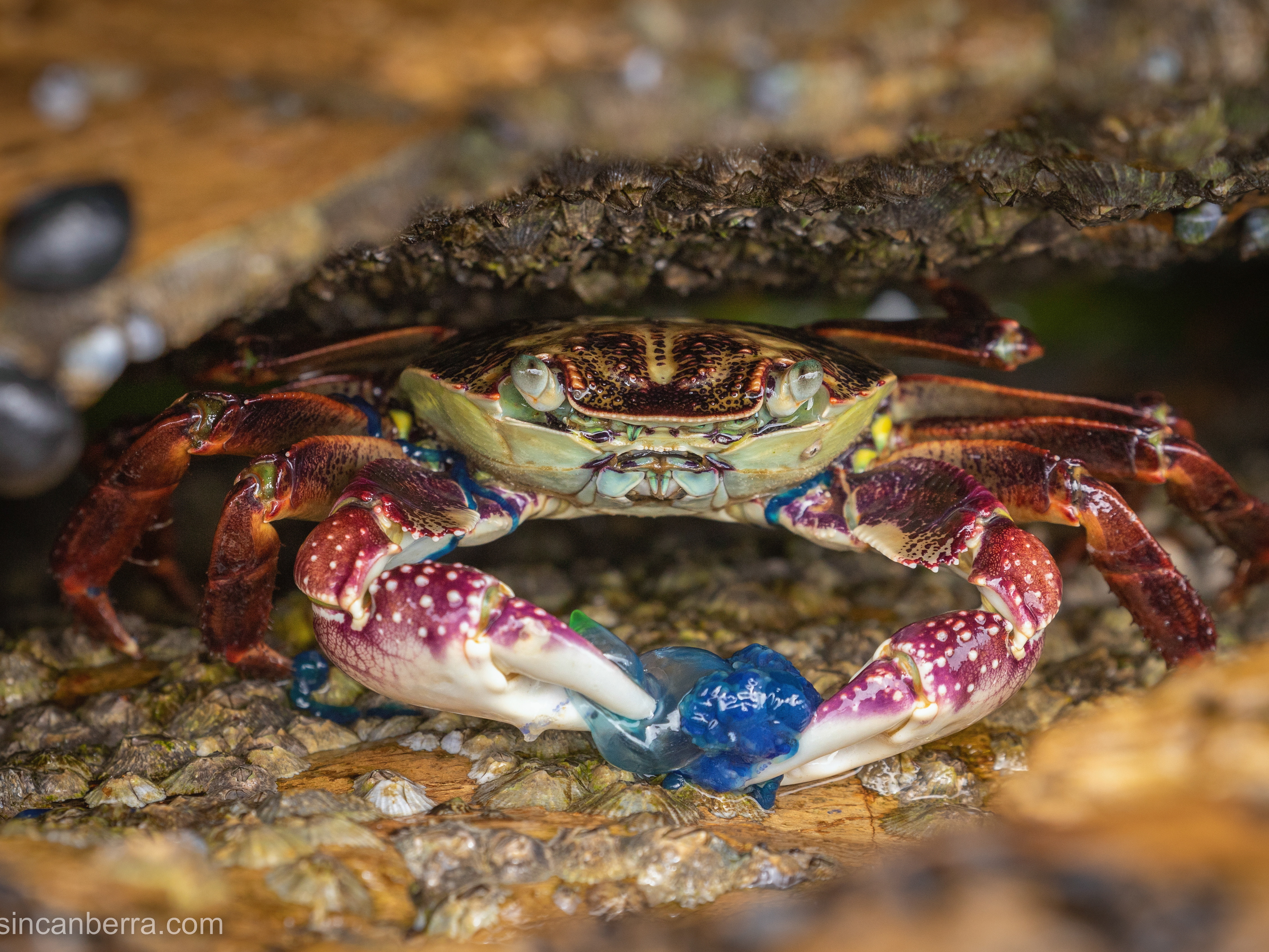The afternoon sun was getting low in the western sky when we finished walking along the boardwalk at Merimbula. This walk took us from the bridge over Boggy Creek in the centre of town, along the side of Merimbula Lake. The tide was low with mudflats and sand exposed. A group of egrets were wading through the still waters of Merimbula Lake and among them was a lone Little Egret. The sun was on the other side of the birds so they were not in an ideal position but the Little Egret raised its head to look in the direction of the sun and I was able to get a photograph when its eye glinted in the sun and there was a rim lighting effect on its white plumage. That was at the end of day one of our trip to the south coast of New South Wales. We needed a coastal fix to recharge our batteries from an early, cold winter in Canberra. We spent four days along the south coast, looking at sites from Eden up to Narooma. It was a wonderful trip to a beautiful part of the world. I hope that you enjoy the photographs below.
More of this story is on my blog at https://bit.ly/3RT7UKU
Merimbula
We stayed two nights in Merimbula to allow us to explore the area. Merimbula town has a population of about 3500 (2016 census data) and occupies the estuary of Boggy Creek, which is referred to more commonly with the nicer sounding name of Merimbula Lake. The town is 250 km south-east of Canberra. We were lucky with blue skies and very little cloud the whole time we were there. Despite being winter the temperatures were mild and very tolerable, especially for people fleeing a Canberra winter.
Little Waltlebird in a street-side grevillea
(Canon EOS 6D Mk II with a Canon EF100-400mm f4.5-5.6L IS II USM [ISO 100, 400mm, f/8.0 and 1/400 SEC])
Rainbow Lorikeet enjoying some banksia nectar
(Canon EOS 6D Mk II with a Canon EF100-400mm f4.5-5.6L IS II USM [ISO 160, 400mm, f/8.0 and 1/400 SEC])
Grey Mangrove
(Canon EOS 6D Mk II with a Canon EF100-400mm f4.5-5.6L IS II USM [ISO 400, 100mm, f/10 and 1/100 SEC])
Oyster farm exposed by the tide
(Canon EOS 6D Mk II with a Canon EF100-400mm f4.5-5.6L IS II USM [ISO 320, 100mm, f/14 and 1/100 SEC])
Little Pied Cormorant resting on a wharf railing
(Canon EOS 6D Mk II with a Canon EF100-400mm f4.5-5.6L IS II USM [ISO 2000, 400mm, f/7.1 and 1/320 SEC])
Australian Pelican flying
(Canon EOS 6D Mk II with a Canon EF100-400mm f4.5-5.6L IS II USM [ISO 160, 400mm, f/8.0 and 1/640 SEC])
White-faced Heron coming in to land
(Canon EOS 6D Mk II with a Canon EF100-400mm f4.5-5.6L IS II USM [ISO 400, 400mm, f/8.0 and 1/400 SEC])
Little Egret being lit by the setting sun
(Canon EOS 6D Mk II with a Canon EF100-400mm f4.5-5.6L IS II USM [ISO 400, 400mm, f/8.0 and 1/400 SEC])
Mud Whelk
(Canon EOS 6D Mk II with a Canon EF100-400mm f4.5-5.6L IS II USM [ISO 800, 400mm, f/10 and 1/100 SEC])
Sydney Cockle with seaweed attached
(Canon EOS 6D Mk II with a Canon EF100-400mm f4.5-5.6L IS II USM [ISO 800, 400mm, f/10 and 1/100 SEC])
Tin boat floating on the incoming tide at sunset
(Canon EOS 6D Mk II with a Canon EF100-400mm f4.5-5.6L IS II USM [ISO 1600, 100mm, f/10 and 1/80 SEC])
Morning wave in the golden glow of dawn
(Canon EOS 6D Mk II with a Canon EF100-400mm f4.5-5.6L IS II USM [ISO 2500, 100mm, f/8.0 and 1/1000 SEC])
Kelp on the purple-lit morning beach
(Canon EOS 6D Mk II with a Canon EF100-400mm f4.5-5.6L IS II USM [ISO 1600, 100mm, f/8.0 and 1/200 SEC])
Masked Lapwings on the beach regarding me with interest
(Canon EOS 6D Mk II with a Canon EF100-400mm f4.5-5.6L IS II USM [ISO 500, 400mm, f/8.0 and 1/100 SEC])
Australian Pelican at the inlet mouth watching the anglers
(Canon EOS 6D Mk II with a Canon EF100-400mm f4.5-5.6L IS II USM [ISO 800, 234mm, f/8.0 and 1/400 SEC])
Sydney Cockle washed onto the beach
(Canon EOS 6D Mk II with a Canon EF100-400mm f4.5-5.6L IS II USM [ISO 2000, 100mm, f/8.0 and 1/100 SEC])
Rose Barnacles attached to a long dead shell
(Canon EOS 6D Mk II with a Canon EF100-400mm f4.5-5.6L IS II USM [ISO 500, 200mm, f/8.0 and 1/100 SEC])
Granite rock in a red mudstone rock pool
(Canon EOS 6D Mk II with a Canon EF100-400mm f4.5-5.6L IS II USM [ISO 640, 100mm, f/11 and 1/125 SEC])
Silver Gull
(Canon EOS 6D Mk II with a Canon EF100-400mm f4.5-5.6L IS II USM [ISO 200, 400mm, f/8.0 and 1/400 SEC])
Short-spined Sea Urchin
(Canon EOS 6D Mk II with a Canon EF100-400mm f4.5-5.6L IS II USM [ISO 640, 100mm, f/11 and 1/125 SEC])
Wave off the rocks
(Canon EOS 6D Mk II with a Canon EF100-400mm f4.5-5.6L IS II USM [ISO 1000, 400mm, f/8.0 and 1/1000 SEC])
Eden
The furthest point south that we travelled to during our time on the south coast was around the fishing town of Eden. Approximately 2500 people live in Eden, the southernmost town in NSW. This was still an operating fishing harbour but was probably most famous for the whaling that used to occur there before a change in mindset and now whale watching was a major tourism drawcard. The history of the area was filled with controversy, including the activities of Benjamin Boyd who had many commercial interests but was also the person to first use ‘blackbirding’ in Australia. Without downplaying some of the history of the area it was an amazing place to visit because of the natural beauty with the rich red rocks, stunning blue water and the lush greenery. It was an area saturated with so much cooler that the photos took themselves, I just had to hold the camera steady.
Boyd’s Tower looking south along the red cliffs
DJI Mavic Air 2 [ISO 100, 4.5mm, f/2.8 and 1/640 SEC]
Contrasting colours at Red Point
DJI Mavic Air 2 [ISO 100, 4.5mm, f/2.8 and 1/640 SEC]
Swirling waters
DJI Mavic Air 2 [ISO 200, 4.5mm, f/2.8 and 1/1000 SEC]
Wallagoot Gap
Leaving Merimbula on the third day, and having travelled not too far north from Merimbula we stopped at the stunningly beautiful Wallagoot Gap. There, over time the sea has worn a long, narrow gap though the sandstone cliff leading to a small beach nestled inside a steep-sided triangular bowl. The National Parks and Wildlife Service of NSW have emplaced sturdy wooden steps down to that scenic beach and also provided a platform at the top of the stairs to take in the scenery. The gap is located inside the Bournda National Park at the end of an unsealed, narrow road that is passable for two-wheel drive cars. When we visited the tide was up but at low tide, I understand, people can walk out to at least the first gap. Although the tide kept us confined to the beach at the bottom of the stairs we were so glad to have the opportunity to visit this enchanting natural feature..
Looking down on the colours of Wallagoot Gap
DJI Mavic Air 2 [ISO 400, 4.5mm, f/2.8 and 1/400 SEC]
Looking through the gap to the sea beyond
(Canon EOS 6D Mk II with a Canon EF40mm f2.8 STM [ISO 125, 40mm, f/14 and 1/80 SEC])
Bermagui
Continuing north, we had a brief lunchtime stop of a couple of hours at the small port of Bermagui, which sits at the river mouth of the Bermagui River. For a town with only a population of 1500 it has been featured in films and books. In some respects it was actually surprising that more films have not been shot around the beautiful scenery of the south coast, We did not stay long in Bermagui this time because we had more travelling to do but we did have a good walk around to look at things.
Australian Fur Seals swimming in the water off Bermagui
DJI Mavic Air 2 [ISO 200, 4.5mm, f/2.8 and 1/400 SEC]
Waves on the rocks at Bermagui
(Canon EOS 6D Mk II with a Canon EF100-400mm f4.5-5.6L IS II USM [ISO 800, 112mm, f/13 and 1/1000 SEC])
Narooma
Our final destination for the trip was Narooma, where we spent a night, Narooma is a town of about 3000 people that lies about 350 kn south of Sydney. It sits at the mouth of the Wagonga Inlet, which has been modified to ensure that a boating channel always has enough water for vessels to sail along it. Beyond that channel the inlet is very shallow, with large sand flats visible at low tide.
Sea cliffs at Narooma in the afternoon light
(Canon EOS 6D Mk II with a Canon EF40mm f2.8 STM [ISO 1000, 40mm, f/14 and 1/50 SEC] three shot panorama)
Australia Rock
(Canon EOS 6D Mk II with a Canon EF40mm f2.8 STM [ISO 320, 40mm, f/11 and 1/100 SEC])
A rock arch with Montague Island in the distance
(Canon EOS 6D Mk II with a Canon EF100-400mm f4.5-5.6L IS II USM [ISO 1600, 400mm, f/22 and 1/125 SEC])
Australian Fur Seal yawning
(Canon EOS 6D Mk II with a Canon EF100-400mm f4.5-5.6L IS II USM [ISO 1000, 105mm, f/13 and 1/125 SEC])
Fur Seal scratching itself
(Canon EOS 6D Mk II with a Canon EF100-400mm f4.5-5.6L IS II USM [ISO 1000, 158mm, f/9.0 and 1/320 SEC])
Fur Seal having a sleep
(Canon EOS 6D Mk II with a Canon EF100-400mm f4.5-5.6L IS II USM [ISO 1000, 300mm, f/6.3 and 1/100 SEC])
Little Pied Cormorant swimming
(Canon EOS 6D Mk II with a Canon EF100-400mm f4.5-5.6L IS II USM [ISO 1000, 400mm, f/8.0 and 1/320 SEC])
Black Swan
(Canon EOS 6D Mk II with a Canon EF100-400mm f4.5-5.6L IS II USM [ISO 800, 400mm, f/8.0 and 1/400 SEC])
Little Egret
(Canon EOS 6D Mk II with a Canon EF100-400mm f4.5-5.6L IS II USM [ISO 800, 400mm, f/8.0 and 1/400 SEC])
Pied Oystercatcher on a wharf, waiting for the tide to ebb
(Canon EOS 6D Mk II with a Canon EF100-400mm f4.5-5.6L IS II USM [ISO 640, 400mm, f/8.0 and 1/400 SEC])
Australian Pelican in flight
(Canon EOS 6D Mk II with a Canon EF100-400mm f4.5-5.6L IS II USM [ISO 250, 135mm, f/8.0 and 1/500 SEC])
Despite the onset of gloomy weather and some light precipitation I was mesmerised by the waves I could see on the north side of the northern breakwater. The colour in the water under the flat light was sometimes a sapphire green and the waves were constantly assaulted by wind pulling at their tops, turning the water into small spots of foam that were tossed back seawards while the rest of the wave raced to the sand just in front.
There was such beauty in the forms those waves took and they were all unique. I was sorry when a shot of an interesting wave shape did not turn out because I knew that shape was lost forever, never to be repeated by another wave. Despite the weather, I wanted to stay but we had other places to be.
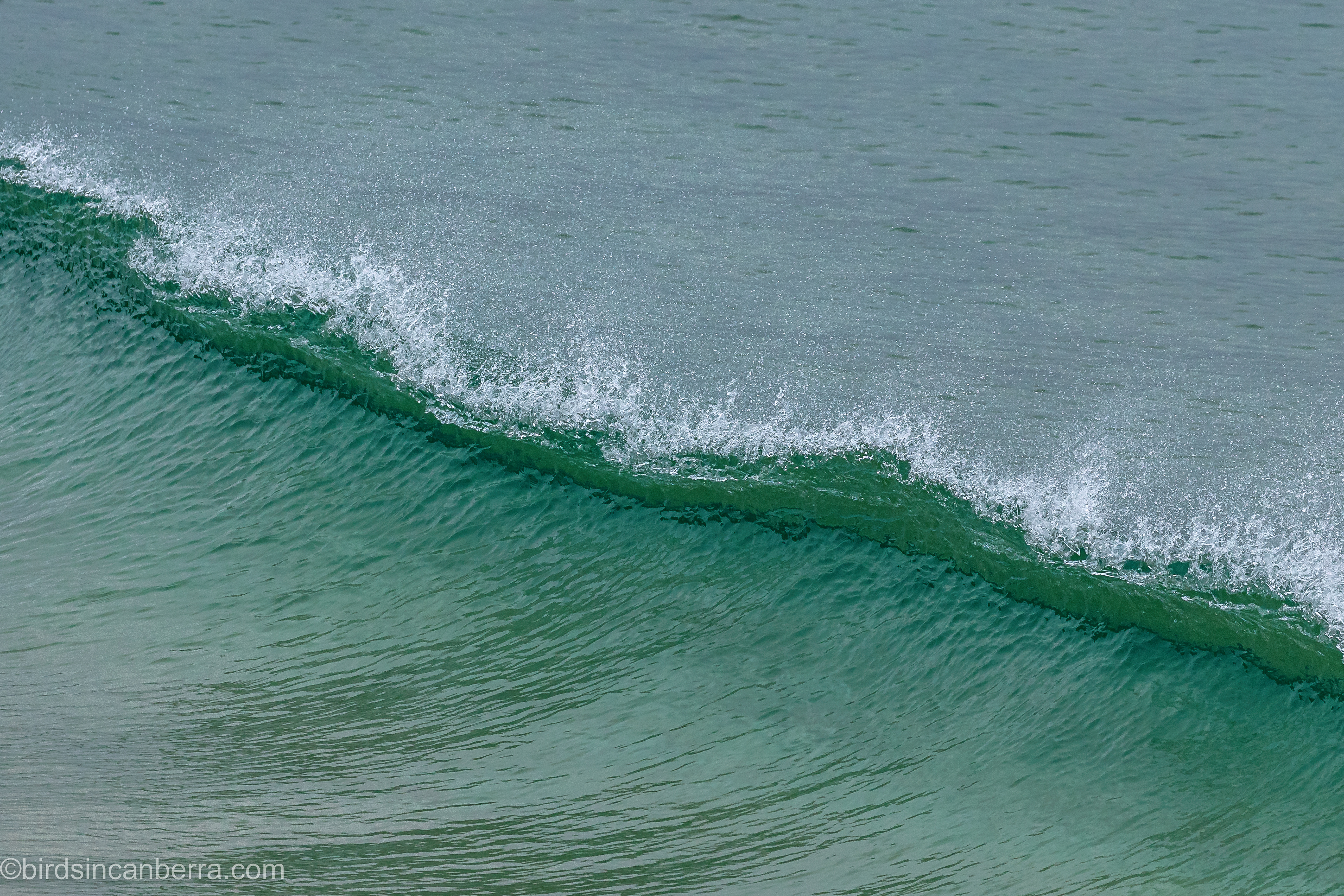
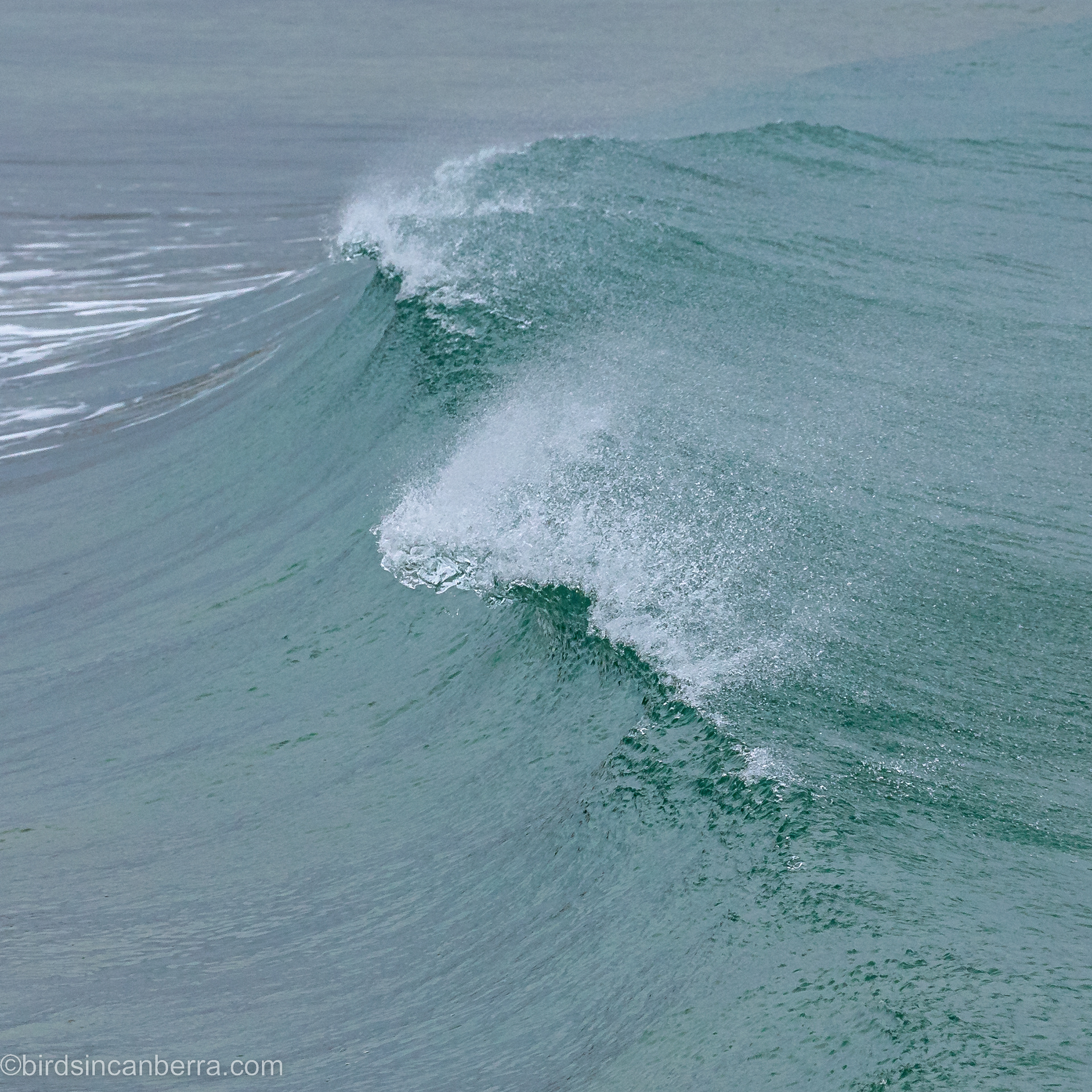
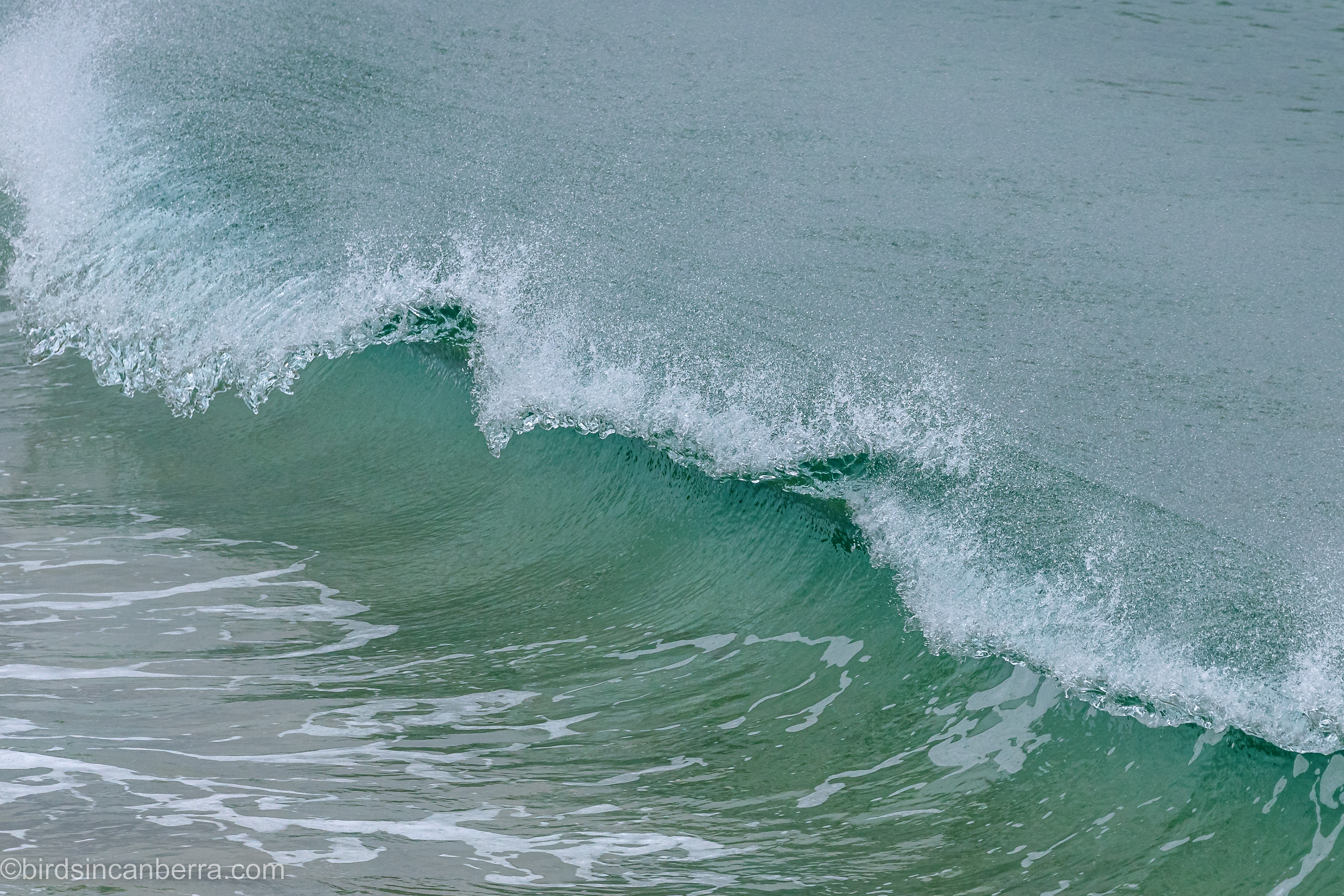
It was lovely to spend four days on the south coast of NSW and for most of the time the weather held for us. The skies were generally blue and we saw such stunning scenery. It was also nice to have the time to enjoy what we saw rather than feel rushed to return to home like so often happens when I can only visit for day. The south coast was a beautiful place to visit, even in winter and we thoroughly enjoyed our bit of coastal therapy with the amazing wildlife and unique scenery.
Thanks for reading this post and thanks also for looking at my photos. I hope you come back again to read more about some of the wonderful natural things that the south coast of New South Wales has on offer. All the best until the next post.
